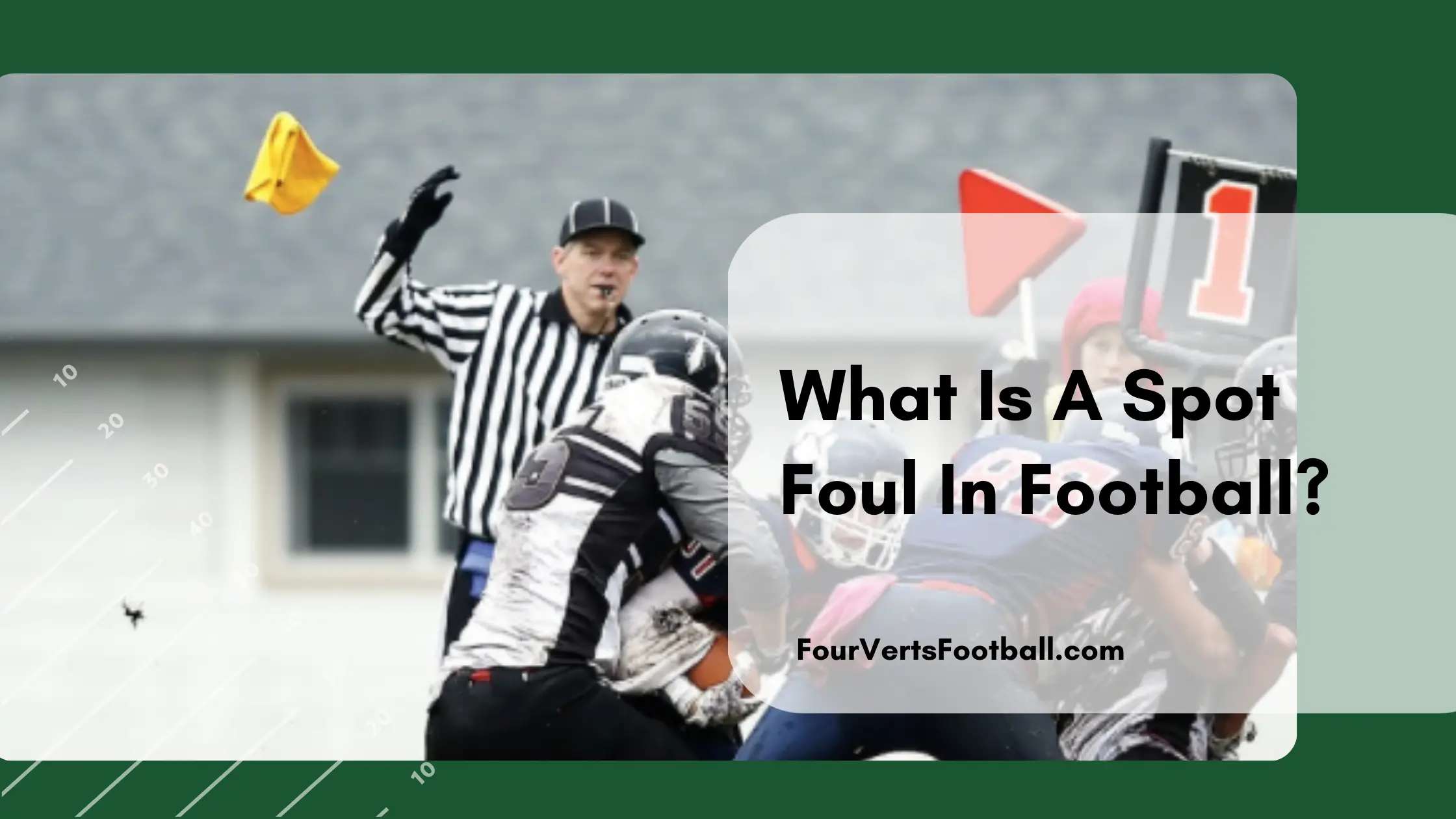Understanding all the rules and penalties that go into American football can be difficult. Once they start breaking penalties down into dead ball fouls, live ball fouls, and spot fouls things can get even more confusing.
That’s why this article is on hand to break down exactly what a spot foul is in football.
In football, a spot foul is a penalty that is assessed from the location the penalty occurred as opposed to the line of scrimmage. Non-spot fouls are applied from where the play started or where the play ended.
Only a small portion of penalties in the NFL are spot fouls. Penalties that are considered spot fouls are done so because it more accurately assesses the effect that the penalty had on the game.
A great example of a spot foul is defensive pass interference. This is a spot penalty in the NFL meaning when this penalty is called the ball is going to be placed where the penalty occurred.
If this penalty was not a spot penalty a team would instead move the ball a set number of yards down the field each time it was called.
Having a set penalty yardage does not work for a penalty like this because a defensive pass interference could cost the offense anywhere from 1-99 yards.
For example, if a player was about to catch a fifty-yard catch and was fouled it doesn’t make sense to give out a ten or fifteen-yard penalty. Instead, a spot foul is called and the ball is placed on the spot the penalty took place.
List Of Spot Fouls
By now you should have a good understanding of what spot fouls are in football. But to drive the point home we are going to break down all the spot fouls you will see called in football.
Intentional Grounding (Always)
Intentional grounding is one penalty that is always going to be a spot foul in the NFL. This penalty occurs when a quarterback throws a pass behind the line of scrimmage with no receiver in the area.
This penalty is assessed at the location of the quarterback when he threw the incomplete pass. The reason this penalty is a spot foul is that its penalty yardage is meant to down the ball where the quarterback would have been sacked.
Committing an intentional grounding play is going to allow a quarterback to avoid being sacked in the backfield.
Therefore assessing this penalty as a spot foul is going to place the ball where it would have been if the quarterback didn’t intentionally ground the ball in order to avoid the sack.
Defensive Pass Interference (Always)
Defensive pass interference is another penalty that is always going to be a spot foul in the NFL. The reason this penalty is a spot foul is that it can prevent huge offensive play from happening.
The largest a non spot foul penalty can be in football is fifteen yards. If defensive interference was a fifteen-yard penalty it would make sense to interfere on every pass that was over fifteen yards.
In order to stop defensive players from committing these penalties defensive pass interference must move the ball to the location where the penalty occurred.
This way it is not going to benefit your team to commit this penalty on a long pass.
Holding (Sometimes)
Holding is an interesting case when it comes to spot fouls in football. Many fans wonder whether the holding is a spot foul.
A holding penalty in football is a spot foul on some occasions and assessed from the line of scrimmage on others. If a play goes past the line of scrimmage a holding penalty becomes a spot foul.
If a holding penalty occurs when the player is behind the line of scrimmage the penalty will be assessed from the line of scrimmage. If the player is past the line of scrimmage the penalty is assessed from where the ball carrier was when the penalty was called.
This is why you may see unusual down and distances such as 1st and 13 after a hold. In this situation, the ball carrier would have gained seven yards before the holding penalty occurred.
After adding on ten yards for the penalty and replaying the down it then becomes 1st and 13.
Additionally on kick returns and punt returns holding is a spot foul as well. This means the penalty yardage will be assessed from the location of the ball when the penalty occurred.
Clipping (Sometimes)
Clipping follows the exact same logic of holding penalties in football. If it occurs behind the line of scrimmage this is not a spot foul.
If the ball carrier has crossed the line of scrimmage it becomes a spot foul. This penalty is also a spot foul if it occurs during a kick or punt return.
Illegal Block In The Back (Sometimes)
Illegal block in the back is another penalty that follows the same standards of clipping and offensive holding.
This penalty is a spot foul if it takes place past the line of scrimmage. It is also a spot penalty if it is called during a kick,punt, or interception return.
Punt returns and interception returns are two situations in which illegal blocks in the backs are often called.
On these plays, the ball will go back to the location of the ball when the foul took place and the penalty yards will be assessed.

